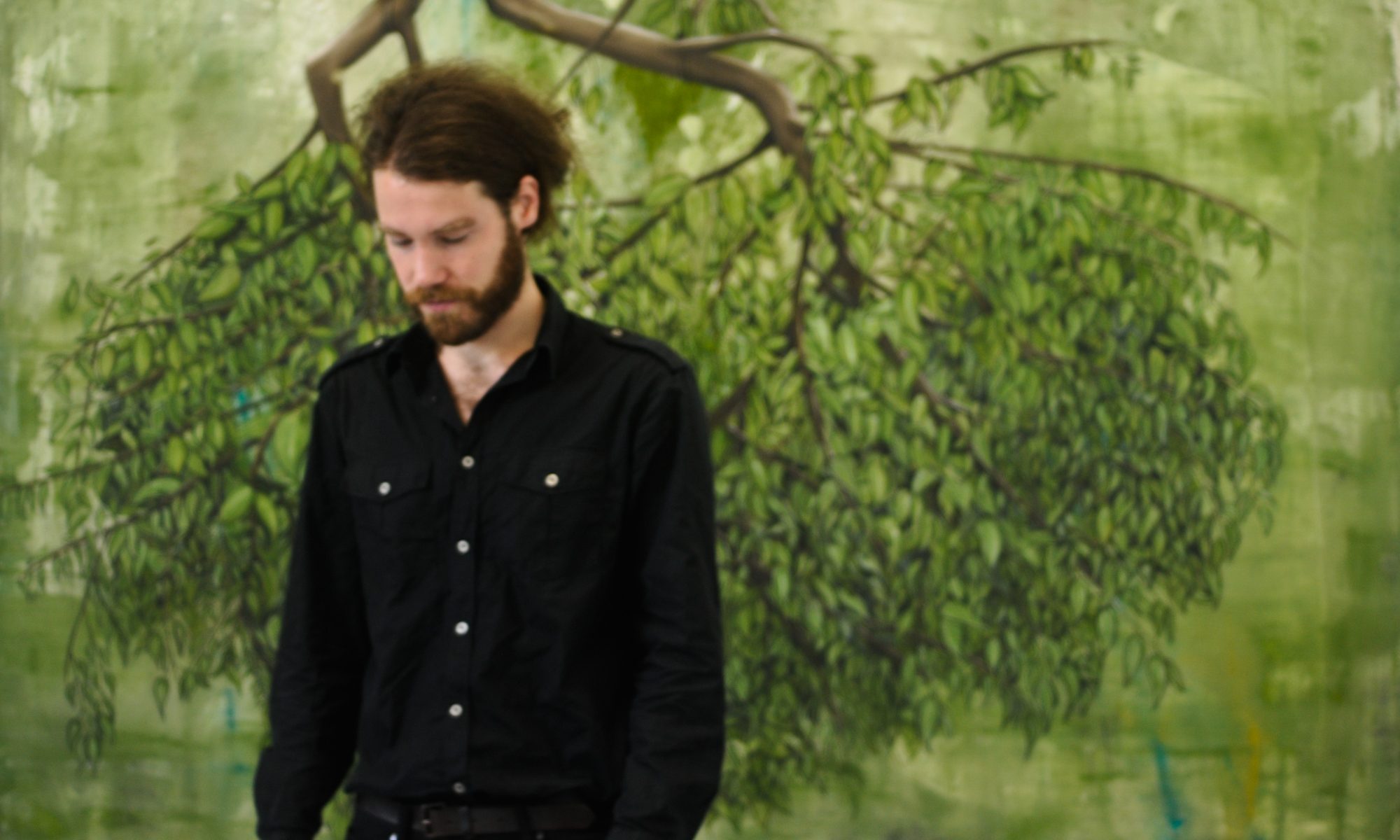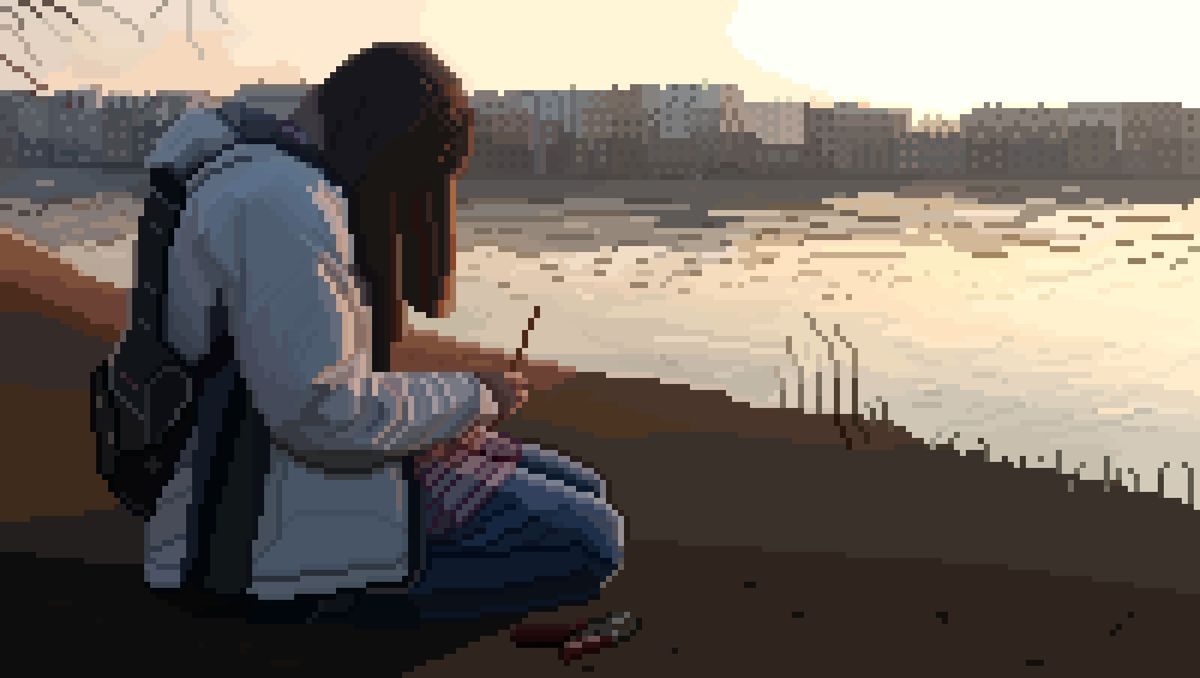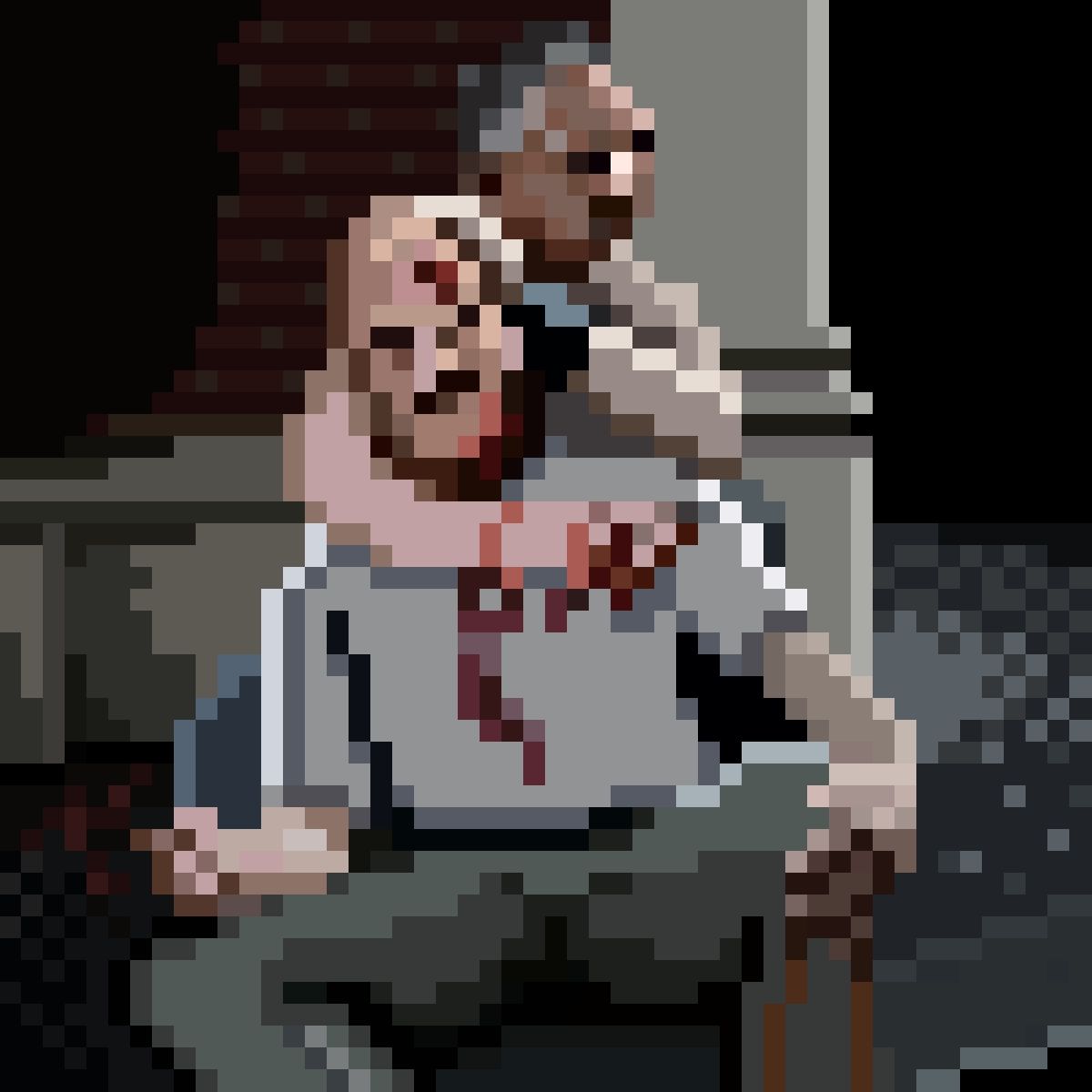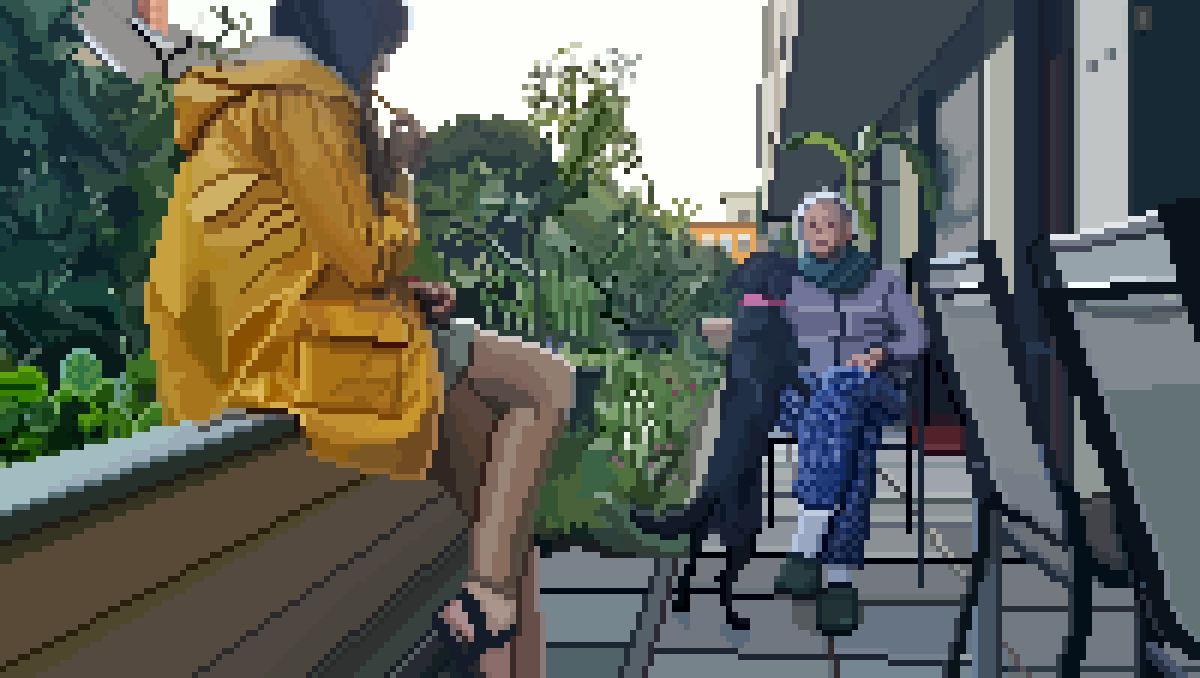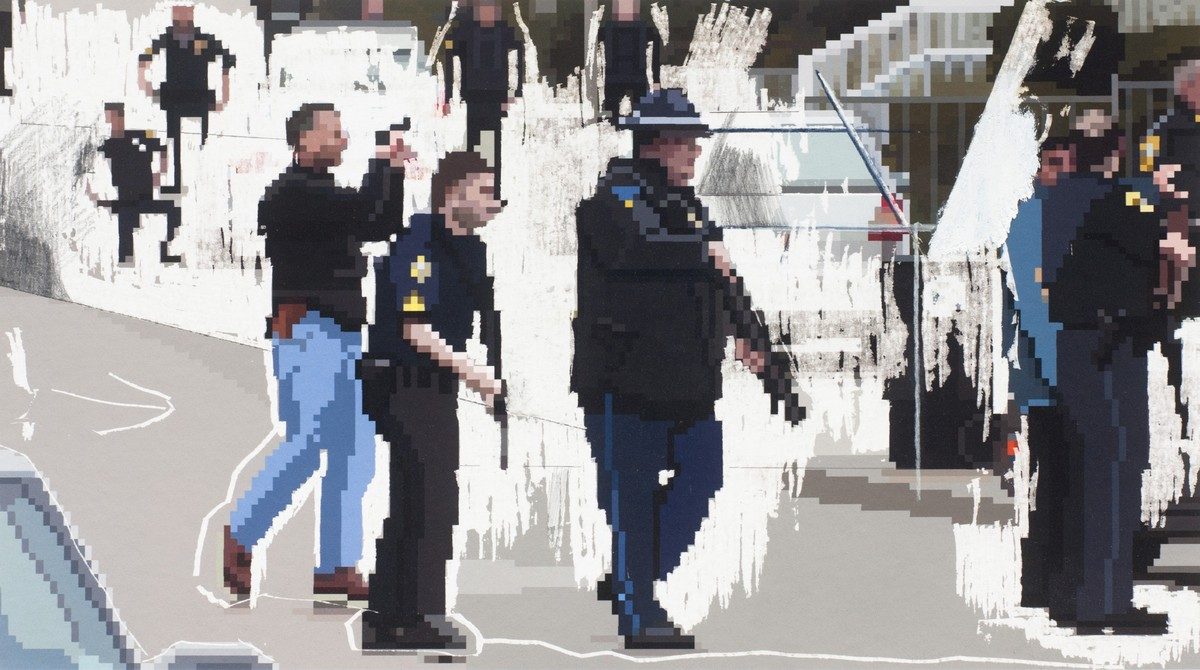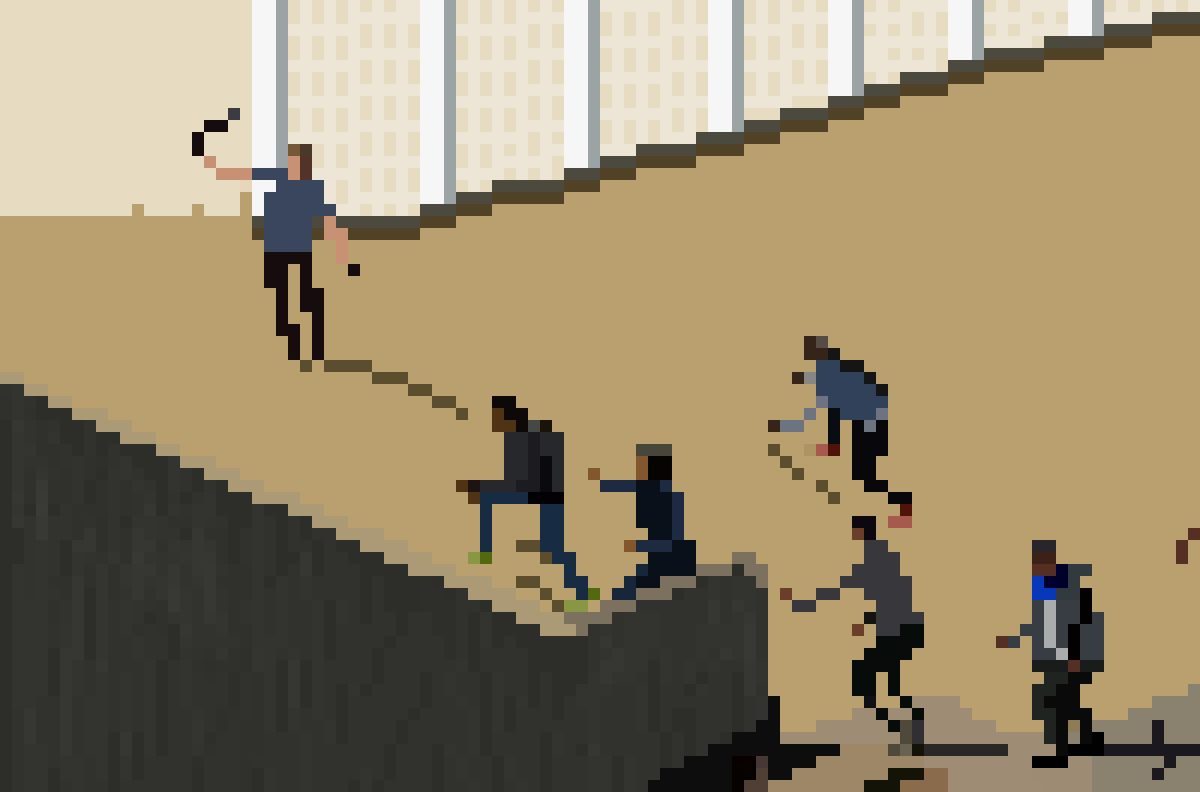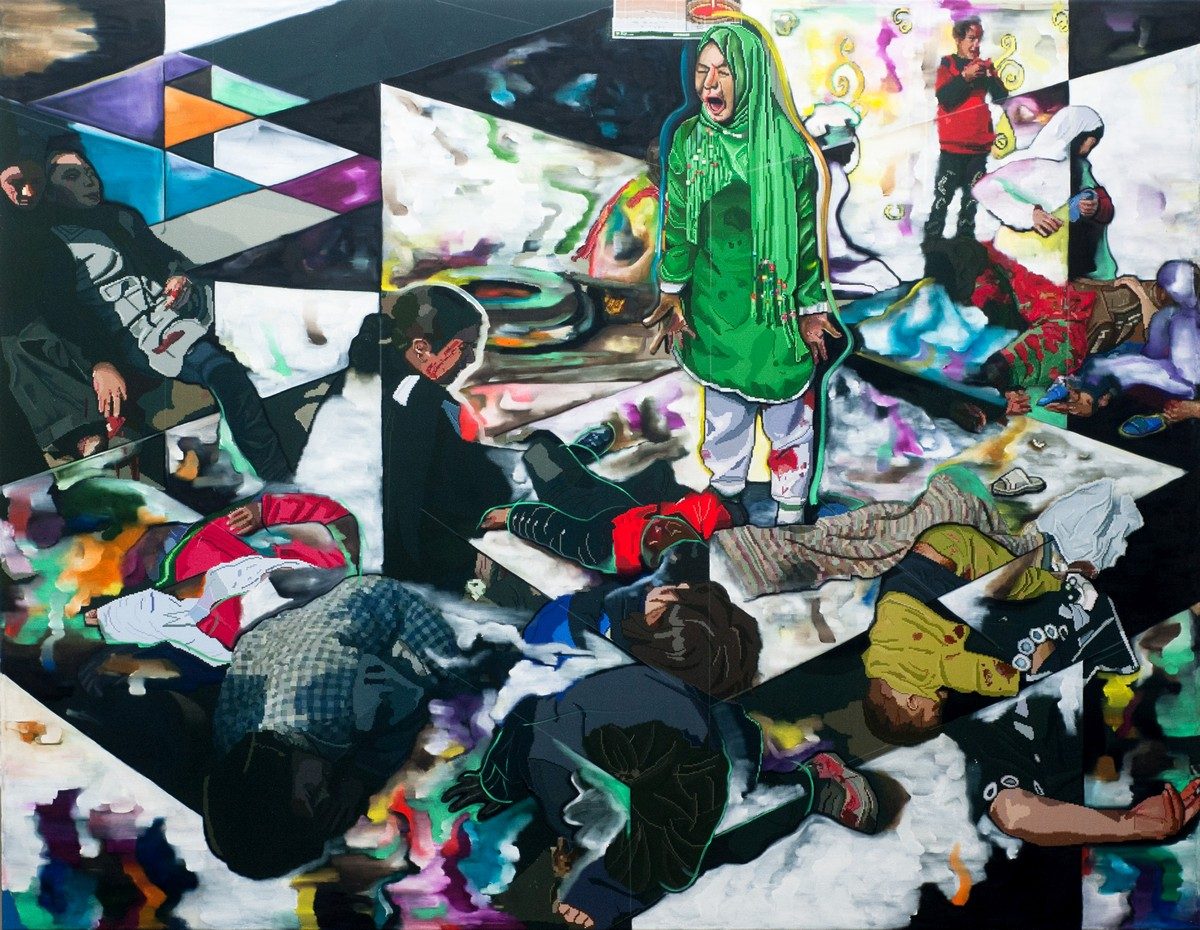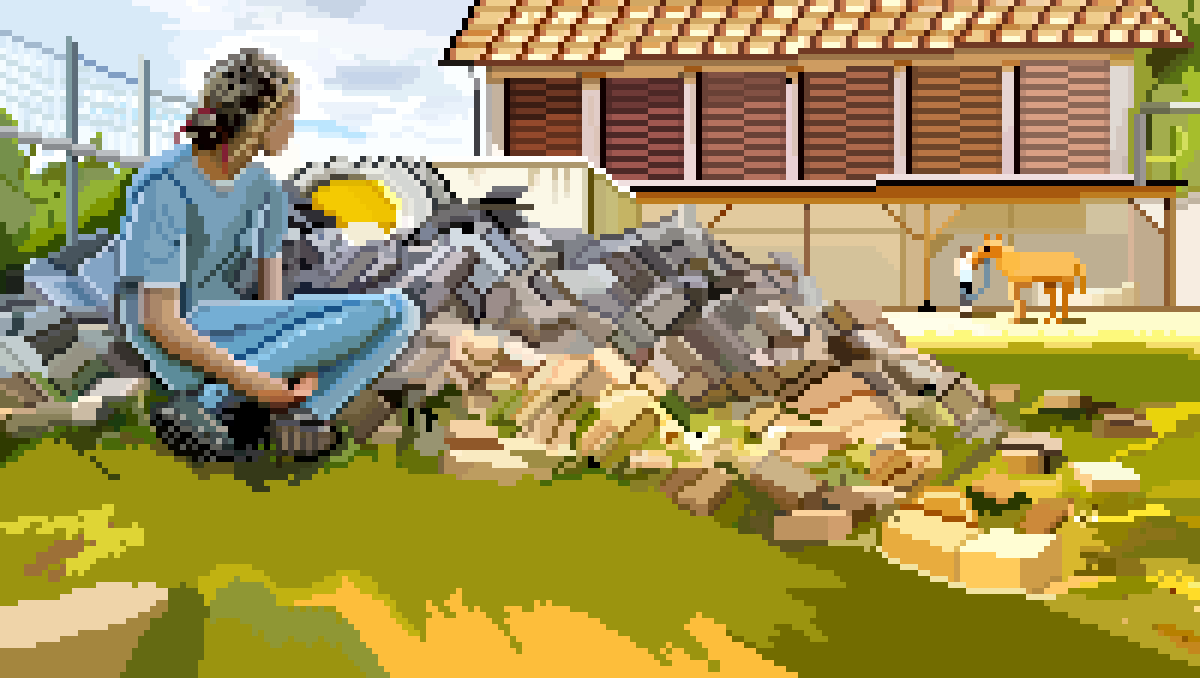In “GRADATIONS OF TRAUMA“, his second solo exhibition at “gallery twenty-six” (opening on February 10th 2024, 6pm; running from February 12th to March 7th, 2024), Christian Bazant-Hegemark will show over twenty works from the years 2017 to 2022, venturing into border areas of everyday, and everyday trauma.
(text by Catrin M. Hassa)
A pixel (an artificial word made up of “picture” and “element”) is the smallest visible element of any digital image.
Over the last 35 years, everything has been done to erase it, to make it invisible, to make it disappear in the ocean of high definition. Nevertheless, the pixel aesthetic seems to exert an unbroken fascination: especially in contemporary art, somewhere between matter and tool, the pixel, “the flesh of the image” (Olivier Huard) is more powerful than ever. (Since, art-historically, both the square (Malevich, Cubism, …) and additive color mixing (Divisionism, …) have had incredible impact, it is not too far-fetched to assume that some of that artistic legacy might be conserved – or even restored to some extent – by the pixels, even though to some this conclusion might seem highly speculative.)
The artistic exploration of various computer graphics aesthetics (geometries, vector graphics, glitches – and pixelations) plays a key role in Bazant-Hegemark’s oeuvre. In his PhD thesis (2011-2015) focusing on “Painting and Digital Technologies”, he had already decided to embrace the old-school 80s aesthetics of pixel-based visualities, whereby he sought to expand them into HiBit territory, especially since he is still fascinated by both areas to this day, fluctuating between them.
Bazant-Hegemark chooses a working size (e.g. 100 x 66 pixels), which sets the stage for the visual abstraction / the pixel size as experienced in the final work. The works exist both virtually and physically; for the latter, they are printed like photographs (on handmade paper, but also on canvas).
For Bazant-Hegemark, this “bringing into the world” of his works is crucial, especially as the effect of the work can be experienced in a potentiated way (precisely because of the pixel size visible in the exhibited work, thus becoming physically tangible). “For me, the one proper benchmark is still physical reality – because for my generation, it so drastically influences a work’s emotionality.”
In a small number of the pictures, however, the artist transcended digitality by additionally painting freely in oil on the printed picture, also in order to “to investigate how traditional painting topics operate when referencing the contemporary media world and when they appropriate its formal codes.”
The selection of works exhibited in “GRADATIONS OF TRAUMA” thematically deals with the potential of trauma within political conflicts on the one hand, and with scenes from the private sphere on the other. The translation of horror into pixel aesthetics, especially in the choice of its technical and formal realization (because: where the medium is not the message, it at least determines it), inevitably implies the confrontation of the viewer with the conditions, (im)possibilities and risks of such visual reception. In a way, these works are themselves intermediate figures, making processes of reflection on perceptual patterns and filters, privileges, aestheticizations and ultimately attitudes unavoidable.
“I started pixelating world events in 2017. It is weird and uncomfortable to do this: who am I to depict things that are not my experience. It feels transgressive, which isn’t my intention. These are political, yet highly personal works. They show what I care about; there’s nothing that isn’t political, and nothing that isn’t personal. In addition, this enables me to have a voice in a world that feels to not offer most people such a thing; I stick to the original colors and composition, but still aim to add a relevant layer of self, with the goal to add meaning — of which I’m not sure whether that’s possible.“
